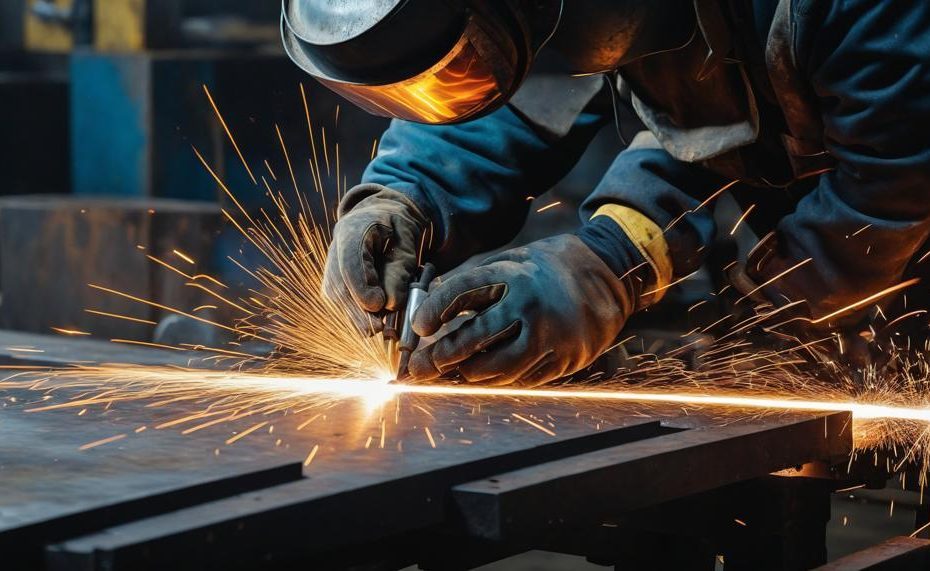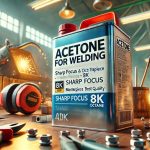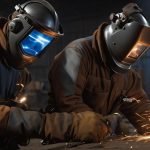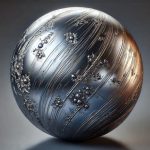Today, we’re diving into the intriguing process of peening in welding – a method that’s as essential as it is often overlooked. In this comprehensive exploration, we’ll unravel the mysteries of peening, showing you not only what it is but also why it’s a critical step in many welding projects.
Our journey will cover:
- The Definition of Peening: Unveiling this specialized technique and its place in the welding universe.
- The Purpose and Benefits: Why do welders use peening, and what advantages does it bring to the weld?
- Techniques and Tools: From traditional to modern methods, learn how peening is skillfully applied.
- Application in Different Welding Scenarios: Discover how peening varies across different welding processes and materials.
As we delve into these points, you’ll gain a rich understanding of how peening enhances the integrity and quality of welds. This isn’t just about joining two pieces of metal; it’s about mastering a craft where every strike and technique can make a world of difference. Whether you’re a seasoned welder or new to the field, this article promises to enrich your knowledge and appreciation for the art of welding. Let’s ignite our torches and begin this illuminating journey into the heart of peening in welding.
Contents
What Is Peening In Welding?
Peening in welding is akin to a meticulous craftsman working over a piece of art, ensuring every detail contributes to its strength, resilience, and beauty. This process involves the deliberate striking of the weld and surrounding metal with a tool, such as a hammer or specialized peening equipment, creating compressive residual stresses that enhance the metal’s properties.
The essence of peening lies in its ability to introduce a state of compressive stress at the surface of the welded metal. This technique directly contrasts with the natural occurrence of tensile stresses that emerge as metal cools and contracts after welding.
By embedding compressive forces into the material, peening acts as a counterbalance to these tensile stresses, reducing the likelihood of crack formation and propagation, which are common sources of failure in welded structures.
Here’s how peening transforms the welding landscape:
| Aspect | Benefit | Impact on Welding |
| Strength Enhancement | Introduces compressive stress | Reduces susceptibility to cracking and failure, extending the lifespan of welded joints. |
| Durability | Counters tensile stress | Increases resistance to fatigue, ensuring welded structures can withstand repeated loads and stresses over time. |
| Aesthetic Improvement | Smoothens surface | Minimizes slag and spatter presence for a more polished appearance, enhancing the overall look of the weld. |
| Versatility | Applicable to various metals | Effective on both ferrous and non-ferrous materials, making it suitable for diverse welding projects across industries. |
In simpler terms, peening serves as a metal’s personal trainer, ensuring it’s not just strong and durable but also pleasing to the eye. It’s a critical step for welders aiming to achieve not only structural integrity but also longevity and aesthetic appeal in their work.
This transformative process guarantees that the metal is well-prepared to face the rigors of its application, much like a soldier being fortified before battle.
The Purpose and Benefits of Peening
Peening in welding serves as a bit of tough love for metal joints, toughening them up and smoothing them out, akin to steel’s own version of body conditioning. Its primary aim? To imbue welded areas with resilience and longevity, transforming them from merely joined pieces to robust, cohesive units.
Main Purposes of Peening:
- Stress Relief: Just as a deep-tissue massage works out the knots in our muscles, peening works on welded metals to alleviate and redistribute the stress concentrated in the weld zone, particularly the pesky residual tensile stress that’s a byproduct of the cooling process.
- Strength and Durability: It’s all about the backbone. Peening fortifies the welded structure, enhancing its ability to withstand loads and resist fatigue—essentially bulking up the metal’s endurance and toughness.
Benefits at a Glance:
- Fatigue Life: Think of peening as a longevity elixir for metal, dramatically extending the time it can perform under cyclic stresses without throwing in the towel.
- Aesthetics: It’s not just about brawn; there’s beauty in strength. Peening polishes and refines, giving welded structures a smoother and more appealing look, free from the unsightly blemishes of slag and spatter.
- Distortion Reduction: By evening out the stresses, peening helps keep the metal from warping or distorting, ensuring it stays true to form.
Let’s lay it out in a straightforward table for a clear comparison:
| Aspect | Purpose of Peening | Benefits |
| Stress Management | Alleviates and redistributes residual tensile stress | Enhances structural integrity and resilience |
| Strength and Durability | Increases the welded area’s ability to withstand stresses | Longer fatigue life and improved toughness |
| Aesthetics and Form | Refines surface texture | Reduces distortion and improves appearance |
How Does Peening Work?
Peening in welding serves as a meticulous process of toughening up and perfecting welds, ensuring they’re not only more robust but also visually appealing.
Let’s dive into how it works and why it’s akin to giving metal a spa treatment to enhance its endurance and aesthetics.
How Does Peening Work in Welding?
Peening is a technique applied post-welding, where the surface of the weld is systematically hammered or bombarded with materials such as shot or glass beads. This method is not just about making the weld look good; it’s a strategic process to imbue the metal with resilience and longevity.
| Step | Action | Purpose |
| 1 | Striking the Weld | Introduces compressive residual stress to counteract tensile stresses. |
| 2 | Application Method | Uses tools like hammers, or shot and glass beads for a uniform effect. |
| 3 | Stress Relief | Alleviates internal stress and enhances metal toughness. |
The Purpose of Peening in Creating Durable Welds
The primary aim of peening is to fortify the welded structure against the internal stresses that occur during the cooling phase post-welding. By introducing compressive forces, peening effectively counters these stresses, significantly diminishing the likelihood of fatigue failure.
- Increases Fatigue Life: By battling the residual tensile stress that can weaken the weld over time, peening extends the lifespan of welded parts.
- Enhances Surface Finish: It doesn’t just stop at making the weld stronger; peening also polishes the surface, offering a smoother and more refined look.
- Reduces Distortion: Welding can sometimes warp metal. Peening helps mitigate this distortion, ensuring the integrity of the welded structure.
In essence, peening in welding is a crucial step that transforms a good weld into a great one. It’s about applying pressure in the right places to toughen up the material, much like kneading dough to get the perfect texture.
Tools and Techniques for Peening
In the craft of welding, peening is akin to a careful sculptor shaping a masterpiece. It’s a process where the metal is hammered, each blow an artist’s touch, to relieve stress and refine the piece’s durability and form. The tools and techniques for peening in welding are diverse, each selected for their unique contribution to this fine process.
| Tool/Technique | Description | Application |
|---|---|---|
| Ball Peen Hammer | A hammer with a round, ball-like end. | Used manually to strike the weld, particularly in tight spots. |
| Shot Peening | Propels small balls at the surface. | Common for larger surfaces; automates stress relief. |
| Laser Peening | Uses laser pulses to induce surface stress. | Ideal for precision work, avoiding physical contact. |
| Needle Scaler | Powered tool with multiple fine points. | Effective for removing slag and peening simultaneously. |
| Peening Jig | A device to hold workpieces securely. | Ensures even, controlled application of peening techniques. |
To understand peening, one must grasp that it’s not just about hitting the metal. It’s an art. The ball peen hammer, for instance, serves the hands-on craftsman, allowing precise control in peening smaller, more delicate sections. Shot peening, on the other hand, is like rain on a roof, each bead a droplet working to uniformly strengthen the surface. It’s the choice for large-scale applications, where manual hammering isn’t feasible.
Then there’s the finesse of laser peening. Picture a painter with his brush, each laser pulse is a stroke, enhancing the metal’s surface without ever physically touching it. Ideal for intricate tasks, where precision is paramount.
A needle scaler might seem brute in its approach, but it’s akin to a gardener tending to his bed, removing the unwanted while nurturing the underlying structure. Lastly, the peening jig, much like a potter’s wheel, holds and rotates the workpiece, ensuring uniformity in the application of these techniques.
Types of Welding Suitable for Peening
Peening, akin to a meticulous art form that tempers the ruggedness of welded joints into refined strength and beauty, is a critical technique in the welding sphere. It’s like giving metal a thorough pampering, ensuring it’s not just tough but also has a dash of elegance. Let’s delve into the welding styles that stand up to the rigorous yet rewarding process of peening.
| Type of Welding | Description | Suitability for Peening |
| TIG Welding (Tungsten Inert Gas) | Known for its precision and clean welds, TIG welding employs a tungsten electrode to weld thin sections of stainless steel and non-ferrous metals like aluminium and copper. | Highly suitable, especially for metals requiring fine finishing touches post-welding. |
| MIG Welding (Metal Inert Gas) | A versatile welding method that uses a continuously feeding wire, MIG welding is ideal for both thick and thin metal sheets. | Well-suited for peening due to its adaptability across a range of materials and thicknesses. |
| Stick Welding (Shielded Metal Arc Welding) | This welding type uses an electrode stick and is effective for heavy-duty welding tasks, including construction and industrial fabrication. | Appropriate for peening, particularly in structures requiring enhanced durability and resistance to fatigue. |
Each welding technique, with its unique charm, presents an avenue for peening—a process that not only combats the internal stresses induced during welding but also beautifies and strengthens the weld. From the precise TIG to the versatile MIG, and the robust stick welding, peening intertwines with these methods, ensuring the welded metals aren’t just joined but are also primed for endurance and aesthetic appeal.
Precautions and Safety Measures for Peening
Peening in welding, akin to sculpting with fire and metal, demands respect for its craft and an adherence to safety measures. This process, vital for strengthening welds, requires meticulous attention to detail and stringent safety protocols. Below are essential precautions and safety measures:
Personal Protective Equipment (PPE):
Guard yourself from head to toe. Essential gear includes fire-resistant clothing, gloves, eye protection, and earplugs. Helmets with proper filtration shades protect eyes from radiation, while durable gloves fend off electrical and thermal dangers.
Electric Shock Prevention:
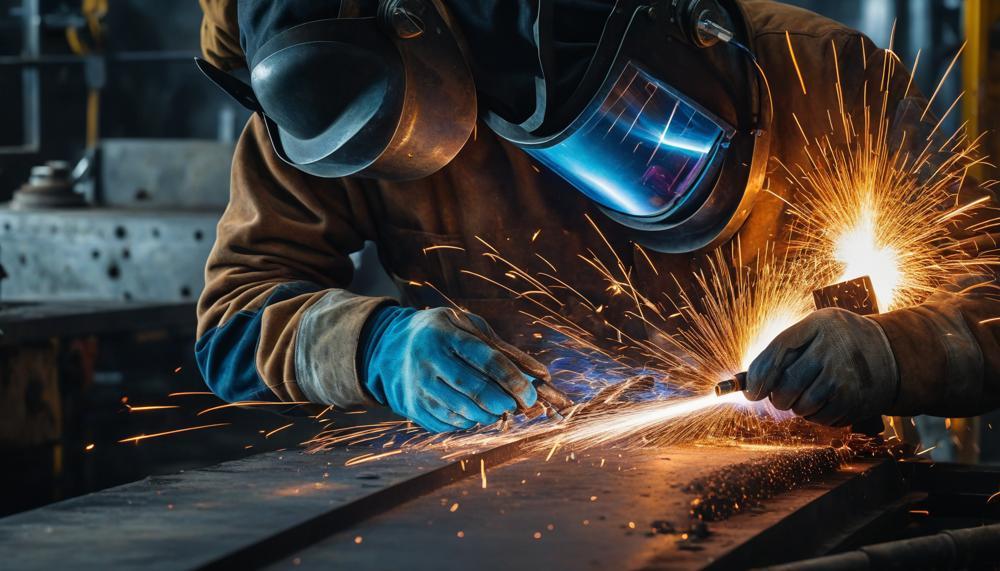
A peril often underestimated by welders. Ensure all equipment is grounded, wear dry, hole-free gloves, and stand on insulation mats while welding to fend off this invisible threat.
Fire Safety:
Peening can spark a blaze if precautions are not heeded. Keep your workspace free from flammable materials and ensure a functional fire extinguisher is within arm’s reach.
Fume and Gas Defence:
Invisible yet insidious, welding fumes and gases can undermine your health. Ensure proper ventilation in your workspace or don a respiratory mask to guard against these unseen assailants.
Noise Control:
Welding’s clamour can stealthily impair hearing. Don protective earmuffs or earplugs to shield your ears from the relentless din.
Equipment and Area Inspection:
Before igniting your torch, scrutinize your equipment and surroundings. A vigilant check can prevent mishaps waiting to happen.
Proper Storage of Gas Cylinders:
Treat these vessels like the potentates they are. Store upright, secure from falling, and in a cool, dry area to prevent unwelcome surprises.
First Aid and Emergency Preparedness:
Accidents, though we strive to avoid them, can occur. Ensure a well-stocked first aid kit is close at hand and familiarize yourself with its contents.
Conclusion
Peening in welding emerges as an essential yet artful technique, akin to the detailed strokes of an artist on a canvas, refining and strengthening the metal beyond its mere form. It’s about sculpting resilience and beauty into every weld, a process that introduces compressive stresses to combat the natural tensile forces arising from welding. This careful balancing act not only wards off potential cracks and failures but also imbues the welded structures with a durability that withstands the test of time and stress.
Through the exploration of peening, we’ve uncovered its multifaceted role in enhancing weld integrity, aesthetics, and resistance to fatigue. The diversity in techniques—from the traditional hammer strikes to the precision of laser peening—reveals a dedication to craftsmanship and innovation in the field. Moreover, its application across various welding scenarios underscores the adaptability and critical importance of peening in achieving superior weld quality.
Safety, always paramount in welding, demands a disciplined approach to peening, with meticulous attention to protective gear and practices ensuring the well-being of welders. As we demystify peening, dispelling common misconceptions, we pave the way for a deeper appreciation of this nuanced art, highlighting its indispensable value in welding.
This journey through the heart of peening unravels not just a method but a testament to the welding craft’s ongoing evolution.
